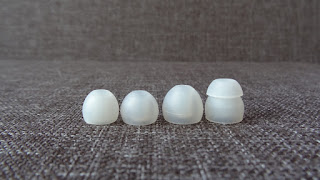First of all, I would like to thank Brainwavz Audio and Pandora for the review unit which I would now review objectively without any biases. I used to own the M2’s from Brainwavz and after that pair died on me, I'm ready to give Brainwavz another shot. I must say I have enjoyed the M2’s thoroughly though
For this review, I have tested this IEM over the course of three weeks, and taking it on a trip with me overseas where I used it while sleeping, on noisy public transports, and doing multiple short workouts.
 Intro
Intro
So these are the Brainwavz IEMs that are designed for the active user, for the athlete in us. They sport a Single Dynamic 9mm driver and an over the ear design, giving the user a snug fit. At a $25 price point, one might have their reservations, but they are a budget offering with absolutely bang-for-the buck sound quality.
These are the complete specifications below.
Specifications:
Drivers: Dynamic, 9 mm
Rated Impedance: 16
Ω
Frequency Range: 20 Hz ~ 20 kHz
Sensitivity: 95 dB at 1 mW
Rated Input Power: 10 mW
Cable: 1.4 m Y-Cord, Copper
Plug: 3.5 mm, Gold plated
 Packaging
Packaging
These sweet IEMs came in an assuming plastic packaging, but upon opening it, what came with it really amazes me at this price point, the standard Brainwavz case, which is one of my favorites, with just the right size to not occupy so much space in my bag, compared to the Pelican Case 1010. Included in the package is also a pair of Comply tips, not just any OEM foam tips but proper Comply ones. I was surprised how they were able to squeeze so much into such a small price point. Apart from that, they had a pair of Bi-flange tips and 3 sets of normal silicon ear tips. I used the default M sized ones which fits me like a glove. They also come with a shirt clip, to clip onto your workout attire, to prevent swinging cables getting in your way while your do burpees or other intensive activities. I found this especially useful especially during my workouts.
 Build Quality
Build Quality
The IEM shells are plastic, actually, the entire IEM is made from plastic and rubber, which makes it lightweight but I am actually impressed with the build quality, it doesn’t feel cheap in anyway and has good strain relieves at the connection between the shells and the cable, and at the Y splitter as well as the termination. The strain reliefs look sturdy and could take a beating without giving way. As a IEM catered to sports and meant to take some abuse, these certainly lived up to expectations. Another point I like to point out is the engraving of the Brainwavz branding onto the shells and the Y splitter instead of printing as I believe after much use doing activities and sports, abrasion or wear might wear out the branding, making it unsightly, thus I guess kudos to Brainwavz. The cables seem to be slightly thicker than the usual cables and has a slight rubbery tactile feel to them which feels good, not sticky or too rubbery. They feel solid and just exudes quality.
 Sound
Sound
Using the M sized eartips, the comfort surprised me. They sit flush in the ear conchae and don’t seem to budge. The shells are rather flat-ish and I could sleep with them without problems. With a good and comfortable fit, I could enjoy the sound of these to the fullest. These came across overall as a basshead pair of earpiece, with emphasis on the strong punchy bass and extensive sub bass that extends really deep. In my opinion, as a pair of IEMs designed for active use, I would assume the user to be listening to fast paced, bassy tracks to give some extra kick to the workout, at least for me. These sounded really good while listening to artists like Alesso, Skrillex, Major Lazer. The bass had quite a bloat, which I enjoyed but does not come off as muddy or sloppy. They were accurate and sounded really pleasant. Mids wise they sounded slightly forward to me, but nothing to shout about in these regions. Vocals were smooth when listening to songs from Kodaline and Adele but not exciting or crisp like the FXT90s which I own. For the highs, they sounded like they roll off abit too quickly, and just doesn’t sound exciting and crisp, which is an area which I think this IEM could be better at. But speaking of which, these are supposed to be a fun pair of IEMs, ready to rock a workout and give thumping bass to the active user, thus I think they did the job perfectly well
 Conclusion
Conclusion
For 25 bucks, I would say these are an absolute gem, I think Brainwavz has nailed it with these pair of active earphones and for those who don’t mind a wired pair of IEMs while you work out, do give these a shot at your local store, or purchase them from the Brainwavz webstore with the link below.
http://www.brainwavzaudio.com/products/xfit-xf200-noise-isolating-sport-iem-earphones-w-3-button-remote-microphone















































